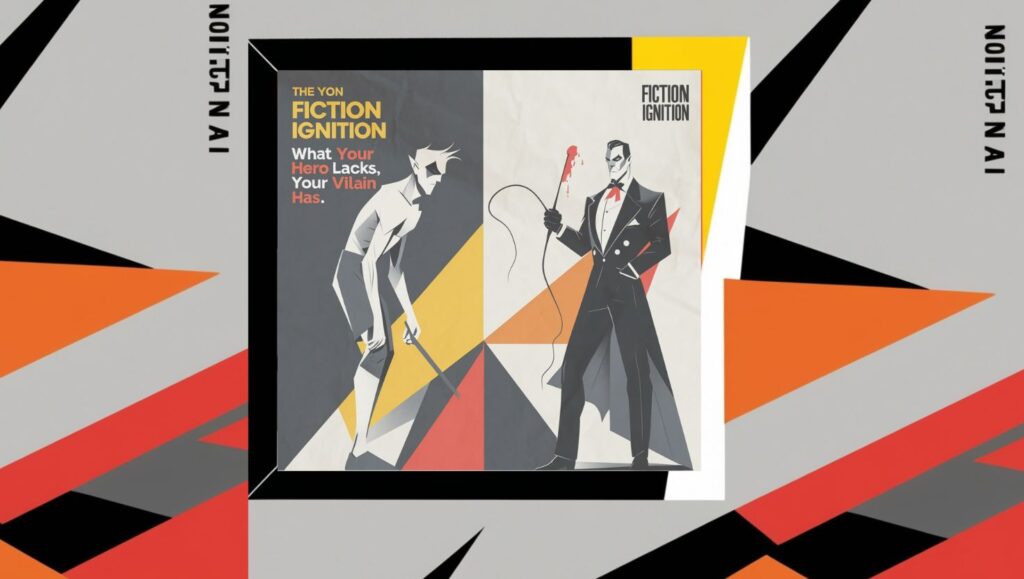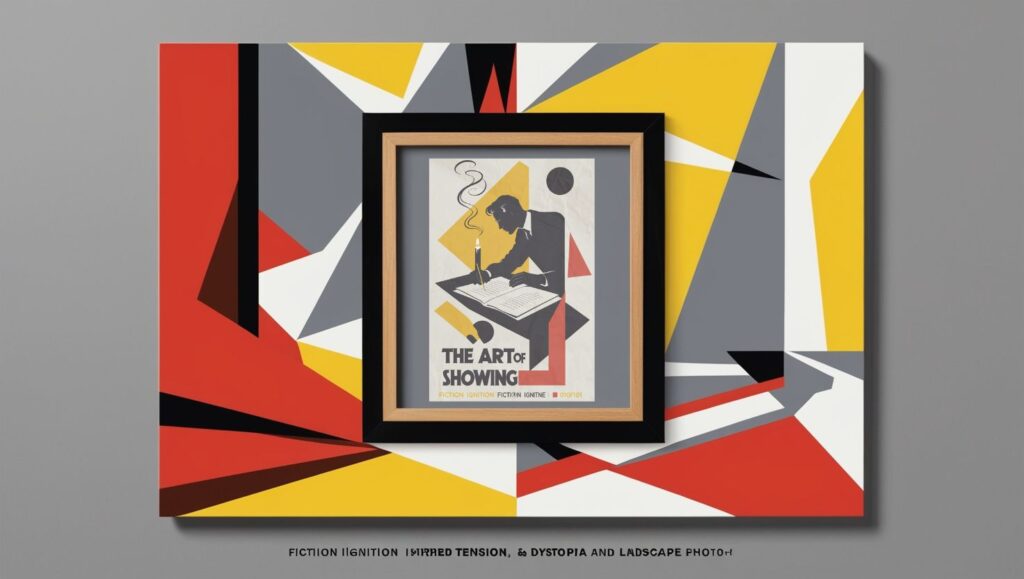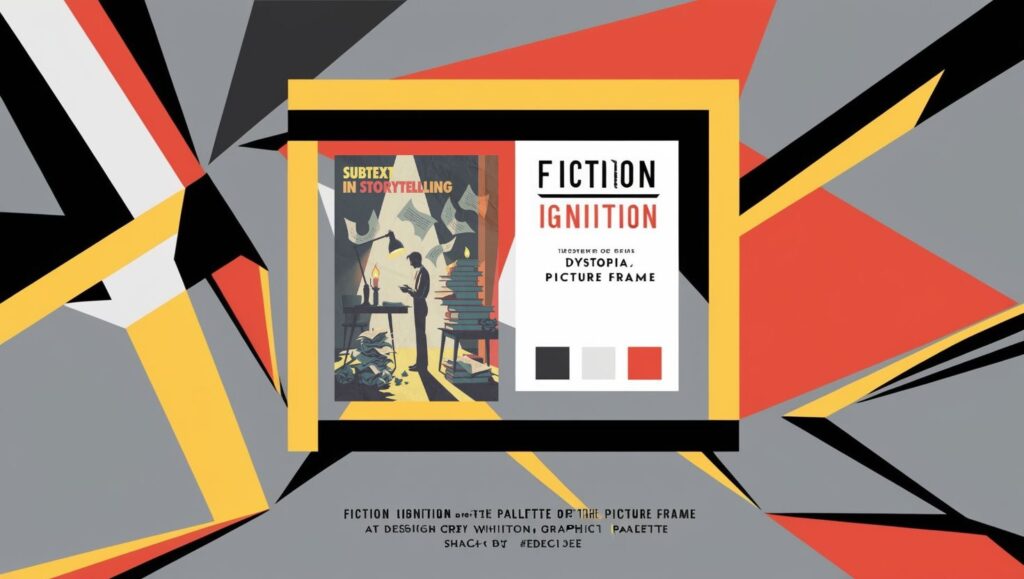How Ender’s Game builds the ultimate competitive arena and what fiction writers can learn to improve their stories.
Greetings, Fiction Igniters! 🔥
Strap in, my Firebrand Fabulists, because today we’re diving headfirst into a battle school orbiting Earth, run by adults with serious trust issues and filled with children flung into zero-G death-dodgeball simulations. Yup, we’re talking about Orson Scott Card’s classic sci-fi juggernaut, Ender’s Game—and more specifically, that gloriously brutal, brilliant, brainy Battle Room. 💥
We’re cracking open this baby not just to nerd out (though oh boy, we will), but because Ender’s Game hides a golden blueprint beneath all the lasers and leadership drama: how to craft a story with a tournament-style structure that burns, builds, and breaks your protagonist in the best ways. 🏆
So if you’re crafting your own competitive, structured journey—be it in a sci-fi thriller, a sports underdog script, a dystopian stage play, or a gaming-centered series—pull up a chair around the story campfire, you Incandescent Imaginators, ’cause the Flamekeeper’s got you covered!🔥🪑
Ender’s Game: Welcome to the Arena, Blaze Crafters 🎯
Let’s talk Battle Room. The zero-gravity laser-tag arena in Ender’s Game is more than a flashy playground. It’s the crucible. The lab. The chessboard. The coliseum. And most importantly, it’s the plot engine that drives Ender’s journey from bullied genius to tactical god.
The key insight? In Ender’s Game, the Battle Room evolves. Just like a killer workout montage in Rocky, the stakes go up. The pressure tightens. Ender is constantly ambushed, betrayed, tested. And readers (and writers!) love it, because nothing reveals character faster than conflict—with rules.
Think of it this way, Kindle Knights: the Arena Story is a dramatic form where competition is the plot. From Chariots of Fire to The Karate Kid, from The Color of Money to The Queen’s Gambit, it’s a journey inside a structure—a tournament, a training arc, a league, a match, a series. And the structure lets you turn every new opponent into a metaphor, every round into a mirror, every win into a cost. 🔁
Now let’s light this baby up and see how to steal the Cardian formula. 🚨
🔥1. Start With an Arena That Matters (Metaphor + Mechanics)
Card didn’t build a cool setting. He built a pressure cooker. The Battle Room isn’t just about learning to fight. It’s about being isolated, manipulated, tested like lab rats. It’s where the adults lie, the teammates betray, the lines blur.
Actionable Tip: Build your arena with layers. Ask: What is the literal goal? What’s the secret emotional or psychological pressure inside the system? Is the competition symbolic of something deeper?
Examples:
- Whiplash (2014): The music conservatory becomes a mental battlefield. Terence Fletcher is both mentor and enemy. It’s not just about jazz—it’s about obsession, abuse, perfection, and identity.
- The Hunger Games: It’s a forest arena—but it’s also a broadcast, a trap, a stage for rebellion.
- Moneyball: The baseball field is the testing ground for a statistical revolution against tradition. ⚾️💥
Bonus Tip: Use your Arena to strip the character bare. No distractions. Just challenge after challenge.
🔥2. Structure the Competition Like a Tournament (Even If It Isn’t One)
Ender’s Game ramps up like a gladiator gauntlet. Each battle is tougher, stranger. Card uses this as an engine:
- First match = surprise.
- Midpoint = betrayal (Dragon Army vs. two armies!).
- Climax = “final exam” that turns out to be real war.
How to Steal This: Break your story into rounds, levels, episodes, matches, missions—whatever fits. Each one should:
- Have a clear goal.
- Change the protagonist.
- Raise the stakes.
Other Story Examples:
- The Queen’s Gambit: Each chess match marks Beth’s rise and her unraveling. It’s character development through brackets. ♟️
- Cobra Kai: The All Valley Tournament is where arcs crash into each other. Use competitions to resolve subplots too.
- Pokémon: It’s literally just this. And we love it.
Flamekeeper’s Hot Tip: If the structure feels too obvious, disguise it. Card does this by pretending it’s “just practice.” But each match is a boss fight.
🔥3. Make the Rules Feel Real (Then Break Them)
In Ender’s Game, gravity flips. Time limits vanish. Two armies attack at once. Then, the “final test” has no do-over. Boom. Card rewrites the rules just when Ender thinks he’s mastered them.
That shocks the character—and the reader. 🚨
Actionable Tip: Explain the rules just enough for readers to understand the stakes. Then… cheat. Show how your system punishes creativity—or rewards it.
Examples:
- The Color of Money: Vincent’s talent is raw, but he doesn’t know the hustle. The rules aren’t just about pool—they’re about manipulation.
- Battle Royale: The collars, the zones, the betrayals—the system keeps mutating.
Narrative Gold: Changing the rules is a fast track to a twist. Just make sure the characters’ choices still matter.
🔥4. Forge the Underdog Arc (But Make ‘Em Earn It)
Ender is the runt. The outcast. The too-smart-for-the-room introvert. And he wins not by strength—but by insight. By strategy. And also? By loneliness.
How to Do This Right:
- Give your underdog a clear disadvantage.
- Let them lose—early and hard. (In the case of Ender’s Game, Scott Card gives him a bully brother and later gives him a bully leader that hates him.
- Let them solve problems differently than others.
- Show how victory costs them. Ender wins the war, but loses his childhood. And, arguably, his soul.
Other Great Underdog Arcs:
- Rocky the OG underdog, from boxing joke to standing his ground with the unbeaten heavyweight champion of the world.
- Billy Elliot: From bullied ballet boy to star—fueled by love and loss.
- Ford v Ferrari: Beating the big dogs by innovating on the rules of racing.
- Free Solo: Not a traditional competition, but that cliff? It is the arena.
🔥5. Pay It All Off (Training = Climax Setup)
The genius of Ender’s Game? The “games” were the war. That final battle isn’t a surprise twist. It’s inevitable—because everything has been leading to it.
To Do This:
- Tie every lesson to the climax.
- Make every hardship count.
- Let victory feel hollow or complex. 🎯
Examples:
- Kingpin (1996): Roy Munson wins by finally not cheating—flipping his arc.
- Rocky: He loses the fight, but wins self-respect.
That’s how you make a climax feel earned, not pasted on. 🔧🔥
The Flamekeeper’s 7-Step Guide to Writing an Arena Story 📜🔥
- Create an Arena that symbolizes your theme.
- Introduce rules (and later, twist them).
- Structure your story as rounds or matches.
- Forge a compelling underdog (or challenger) arc.
- Make each opponent or level escalate tension.
- Use training and loss as character-building.
- Pay it all off with a surprising, earned climax.
Final Sparks, My Scorching Scribes ⚡
What Orson Scott Card did with Ender’s Game wasn’t just science fiction genius. It was arena fiction mastery. He built a metaphorical forge and threw his character—and us—into the flames. And if we come out singed but stronger? That’s storytelling magic. 🧠🔥
You, my Pyro Penpal, can do this in any genre. The competition story arc is eternal. It’s David and Goliath. It’s Cinderella. It’s The Mighty Ducks, The Bad News Bears, The Natural, and Squid Game. 🥊🧠👗
So get in that ring. Build your battle room. And make your readers feel every hard-won victory—and every costly loss.
Until next time, don’t write, ignite! 🔥✍️
How to Write Science Fiction That Feels Possible









